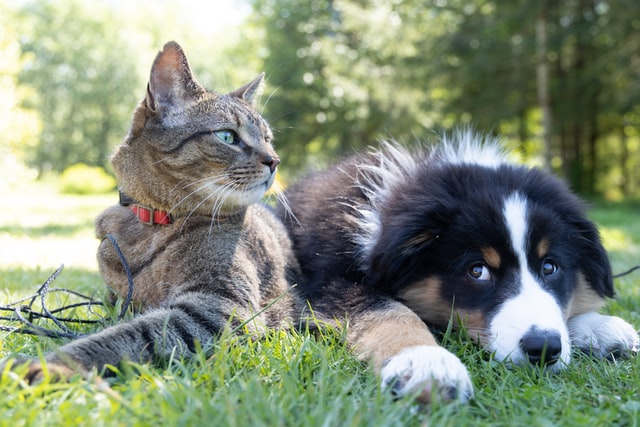Fostering a new pet is one of the most rewarding experiences a pet owner can have. The compassionate volunteers who work with shelters and rescue organisations offer a ray of hope for these pets. By welcoming a foster pet into your home, you help them get ready for adoption into a loving family. Even if you only care for a foster pet for a short amount of time, doing so is still a great help to shelters and rescue organisations.
With the millions of cats that enter shelters every year, there is always a need for volunteers to foster cats. However, everything starts with a proper introduction between the two. This serves as the foundation of the relationship between the two pets, and can make or break the fostering period.
Before Introducing a Foster Cat to a Resident Dog
It’s important that your resident dog already knows basic obedience training. Being able to control your dog is necessary because you want to eliminate as many variables as possible when you make the introduction. You aren’t going to be sure how the foster cat will react, so you will have your hands full with that – trying to wrangle your dog at the same time is a recipe for frustration.
You will have to judge whether or not your dog is ready to meet a foster cat. If you have a dog that is naturally good with people and other animals, such as an Australian Shepherd from a registered Australian dog breeder, then you have a better chance of success.

Before the foster cat and resident dog actually meet, you’ll have to make your foster cat as comfortable as possible. Cats typically need to be introduced into a new home slowly, as doing so will reduce the amount of fear the cat will experience. Isolate the foster cat in a safe room for around a week. The safe room should be closed to the resident dog, and it should have everything the cat needs:
- Scratching post
- Food and water
- Litter box
- Toys and treats
Ideally, you would also have an elevated structure where the cat can hide and rest or simply observe the world around them. Something like a cat condo would work splendidly.
Once the foster cat is calm and relaxed inside the safe room, you can slowly begin to bring the foster cat around other areas of the house while the dog isn’t there. Once the cat is familiar with most areas of the house, then you can try a short introductory session.
Introductory Sessions Between a Foster Cat and Resident Dog
All interaction between the foster cat and the resident dog should be supervised. The first couple of sessions should have the dog on a leash, and ideally, the dog should be told to sit or lie down while the cat is brought into the room. It’s important that the cat be allowed the space to approach or not approach the dog at their own speed.
Observe how the foster cat and dog react to each other. If you notice any snarling, growling, or baring teeth from the resident dog, immediately separate the two. Try again later on when things have calmed down.
If their interaction is relatively calm, allow the dog to walk around on-leash for a little while. The cat should be unrestrained for these introductory sessions, so that they can find their own escape route if the dog decides to give chase. Even if the cat and dog do not interact face to face, simply being in the same general area allows them to observe each other and see that the other animal is not a threat.

If they do have some face to face interaction, the cat and dog will need to establish their relationship. The cat may try to slap or hit the dog on the nose and face. This is typically fine, as the dog is unlikely to be hurt. This is the cat setting up boundaries with the dog. If things go really well, the dog may perform a bow and try to play with the cat. This is a good sign, but you should watch out for the dog getting overexcited. Even an accidental bite and shake may seriously hurt a cat, so separate them before that happens.
Assuming everything goes well, you can let this session go on for around 15 to 20 minutes. It may seem like a short time, but you will be increasing the length of the sessions as you go along. Once the session is over, return the foster cat to their safe space and allow them to relax. These introductory sessions can be tiring for the cat.
Things to Remember When Introducing a Foster Cat and Resident Dog
- Stay relaxed – The foster cat and dog will be looking to you for reassurance. Your mood will set the tone for their encounter. If you’re too excited and try to force them to interact, you may make the situation more tense than it needs to be. The more relaxed you are, the more relaxed they will be.
- Give praise and treats – Remember to give positive reinforcement for friendly and calm behaviour.
- Set your expectations – Some cats and dogs become inseparable best friends. Some cats and dogs simply tolerate each other with nearly no interaction. Some cats and dogs may never be friends and must be separated most of the time. There’s no guarantee that a foster cat and dog will get along. All you can do is set them up for success.






Leave a Reply